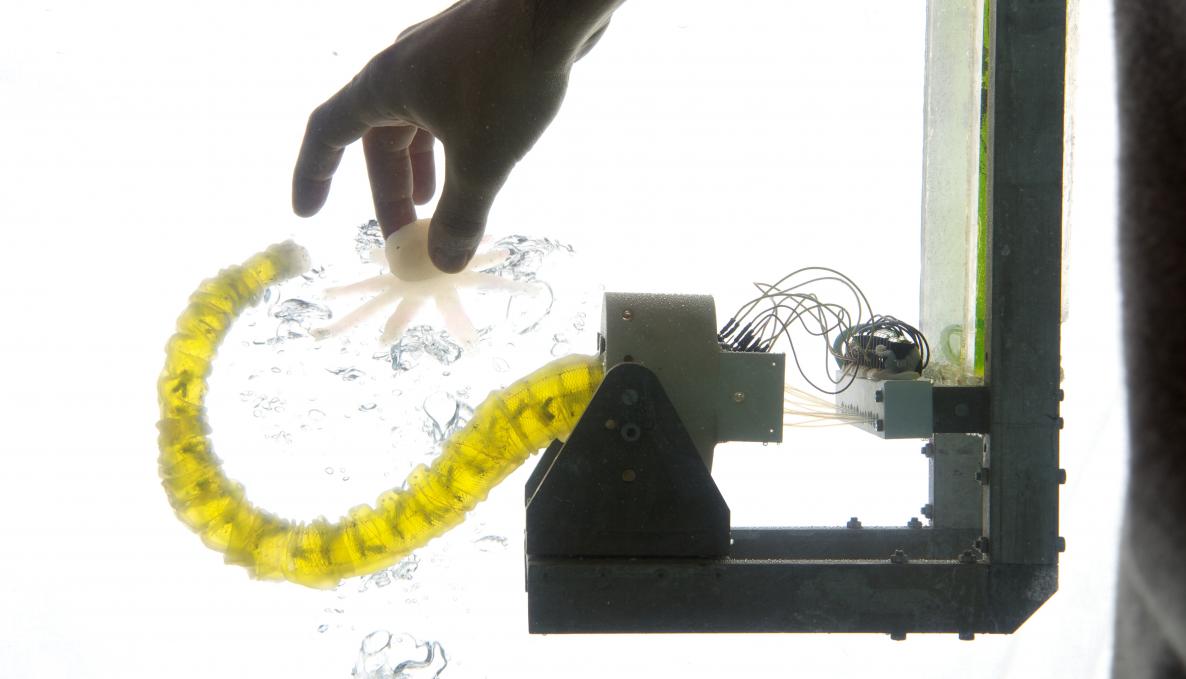Soft Robotics: softer and smarter components. Bioinspired, growing and evolving soft robots can provide assistance with daily living activities

Italian scientists are at the forefront of “soft robotics” research. Soft robotics technologies are becoming a major focus of robotics and cutting edge issues in the development of systems for a wide range of new applications. As published today in new “Science Robotics” of “Science” family of journals, - soft robotics was born thanks to a pool of researchers of the of Advanced Studies and of the Italian Institute of Technology who had the idea to create robots devoid of metal or plastic skeletons and which take inspiration from an octopus (“Octopus”) and from plants (“Plantoid”).
Italian soft robotics is a source of inspiration to researchers worldwide, as described in the paper by Cecilia Laschi, and Matteo Cianchetti of Sant’Anna School BioRobotics Institute and Barbara Mazzolai of Center for Micro-BioRobotics at the Italian Institute of Technology. Soft robotics, intended as the use of soft materials in robotics, will overcome the basic assumptions of conventional rigid components (metal and plastic). Using soft materials to apply forces on the environment will make the soft robot move, grasp, and perform daily tasks.
The paper sets out indicators against which the research progress will be measured. Soft robots and their ability to deform, together with the lack of rigid components make them suited to interaction with humans. The field of soft robotics faces a number of fundamental scientific challenges: the studies of unconventional materials available and useful for robotic applications; tools and methods for fabrication and assembly. Soft and deformable structures are crucial in uncertain, dynamic task-environments and the robots may be able to learn from the natural environment by autonomously exploring the world and adapt to new circumstances. The bio-inspired robots of the future, like “Octopus” and “Plantoid”, will be able to perform tasks in operating rooms (supporting surgeons in operations requiring high-precision manipulation), in homes (helping elderly people in the shower), in assisted living facilities and in factories (manipulating delicate objects, such as fruit or eggs).
“Soft robotics technologies – explains Cecilia Laschi – allow us to imagine a soft, resilient and deformable robot able to evolve, grow, change shape and squeeze into a small space. In our future work we look forward to building robots which are integral parts of our daily lives”.
“There is technological and ideological congruence – says Barbara Mazzolai, between soft robotics and bio-inspired robotics. Future generations of robots will be bio-inspired. Taking inspiration from the natural design, they will sense the environment, appear, move and behave like living creatures”.
“Bio-inspired soft robots lead to future scenarios and innovative technologies – says Matteo Cianchetti. Our approach is to use soft, flexible sensors and soft materials to improve the movements of artificial prototypes which now resemble human muscles contractions. We need a careful study of the silicone-rubber for the fabrication of soft sensors that are expected to provide accurate and reliable sensing without compromising the natural movements and comfort of the users”.
The future of robotics is soft, and soft robotics will provide a significant impact in human-oriented, bio-inspired robotic devices. Nature has provided inspiration and reliable models for millions of years. Soft technologies will make robots gradually adapting to more complex tasks and interact collaboratively with human users.



